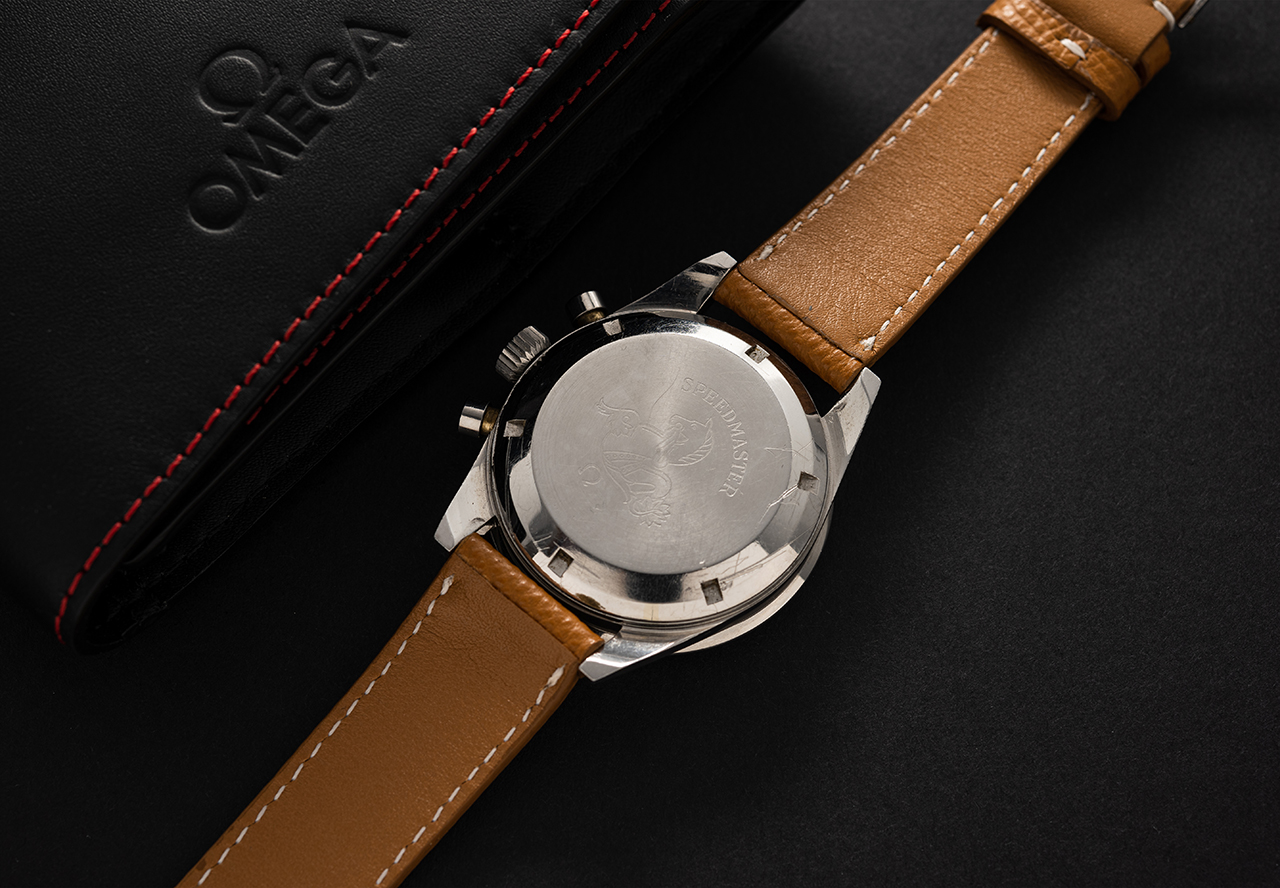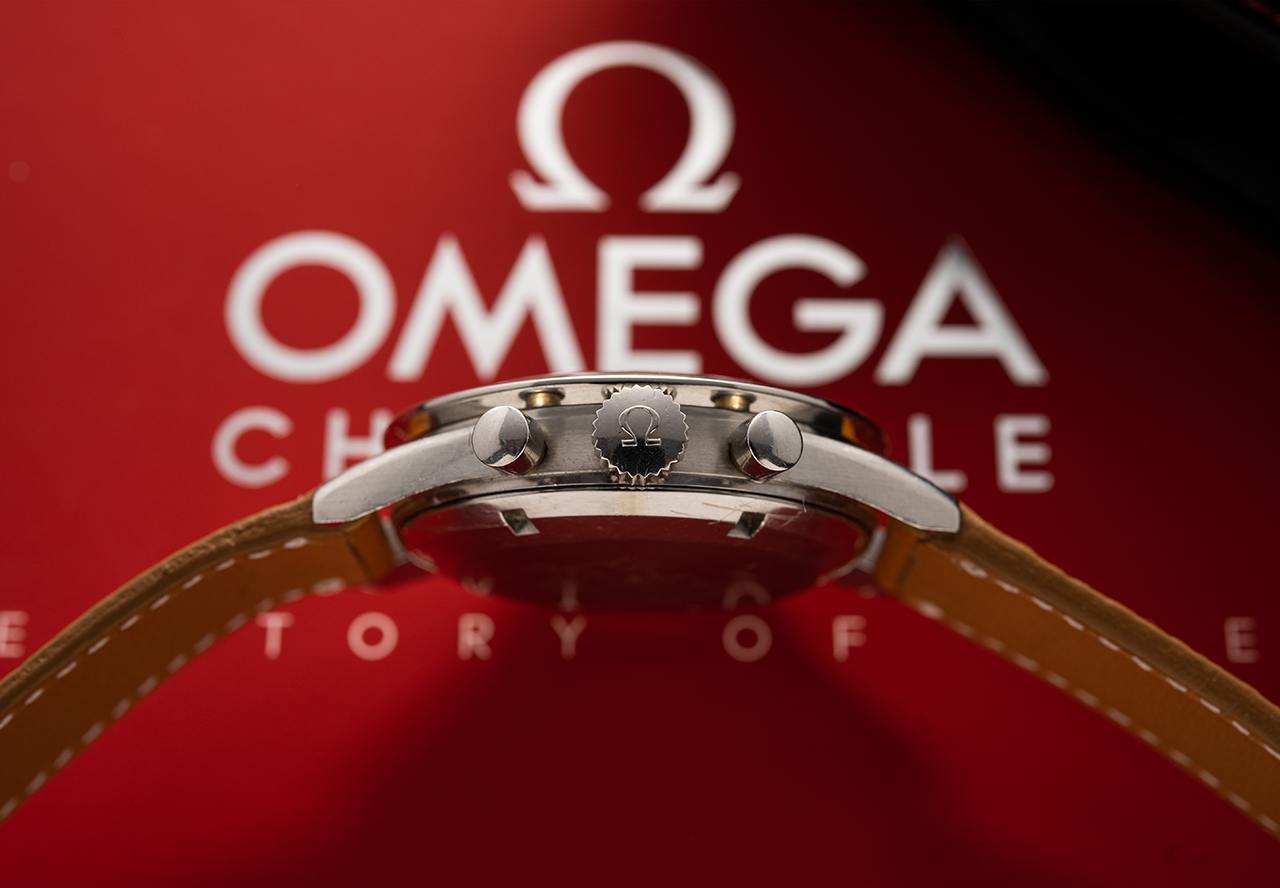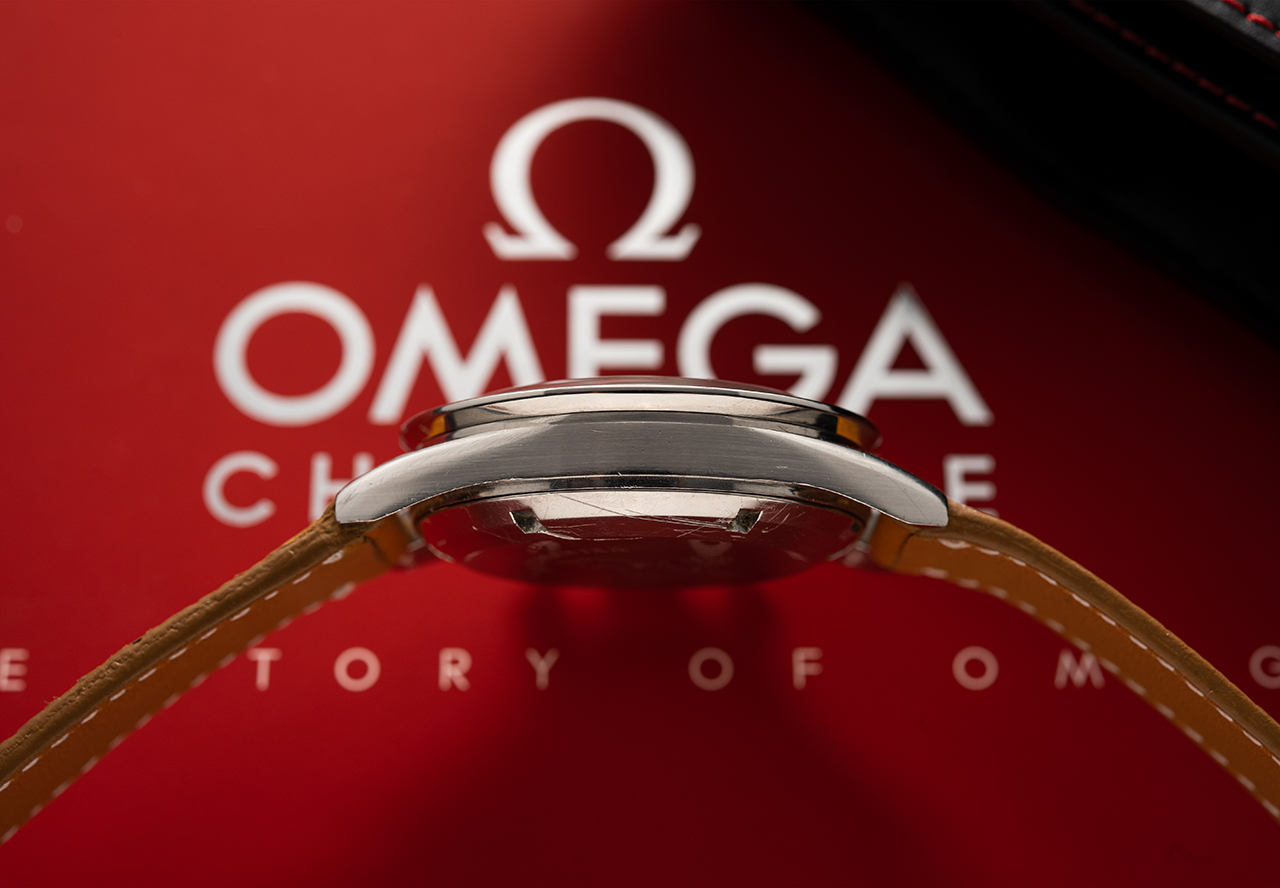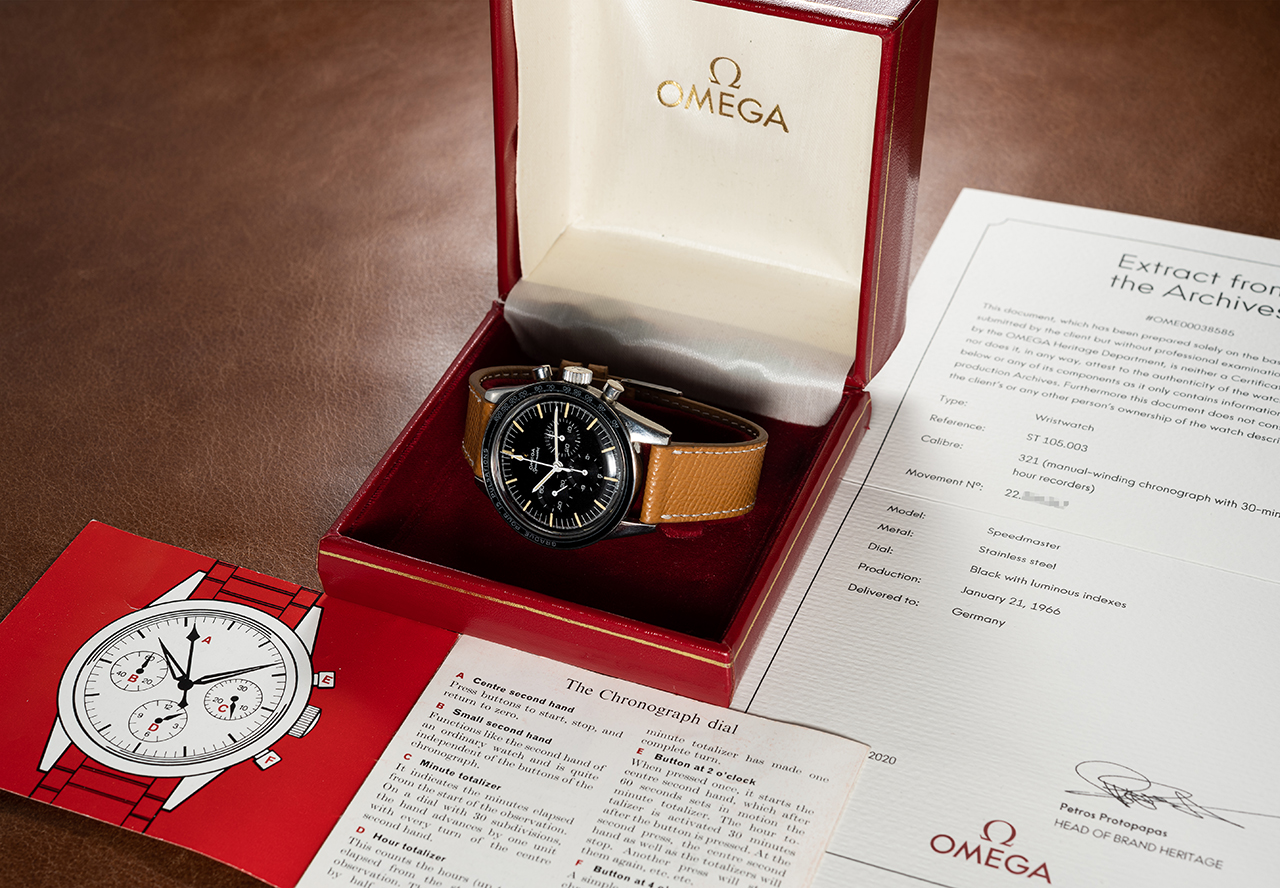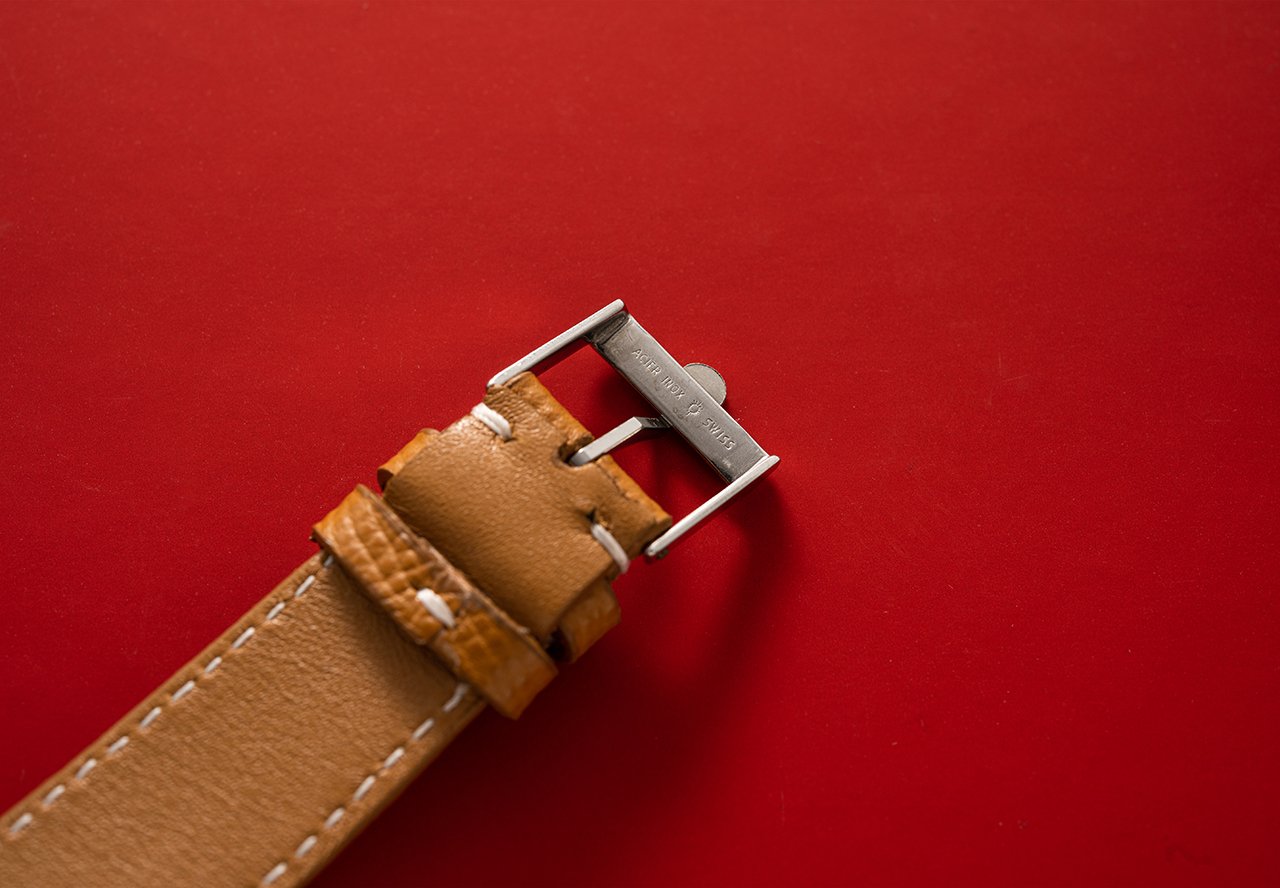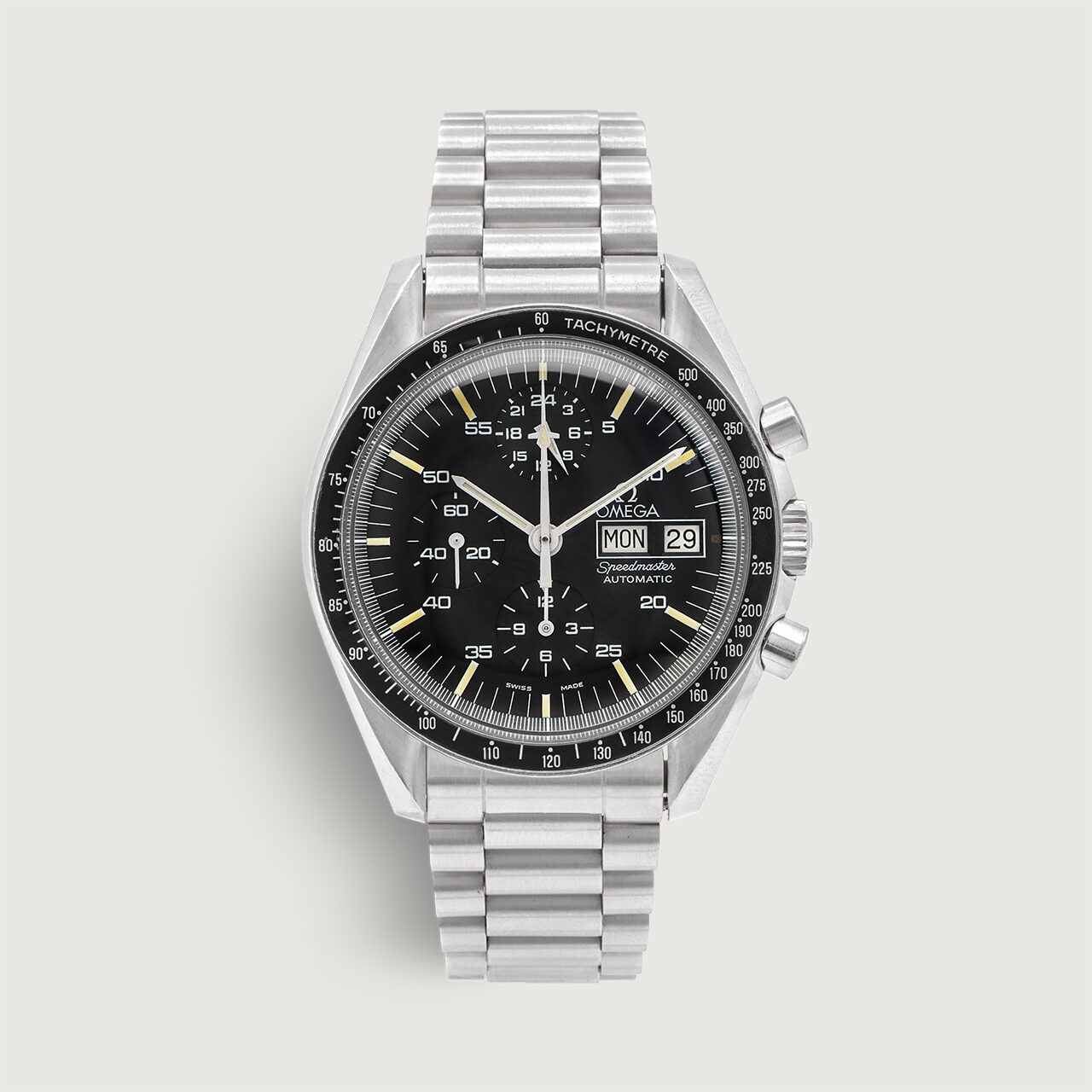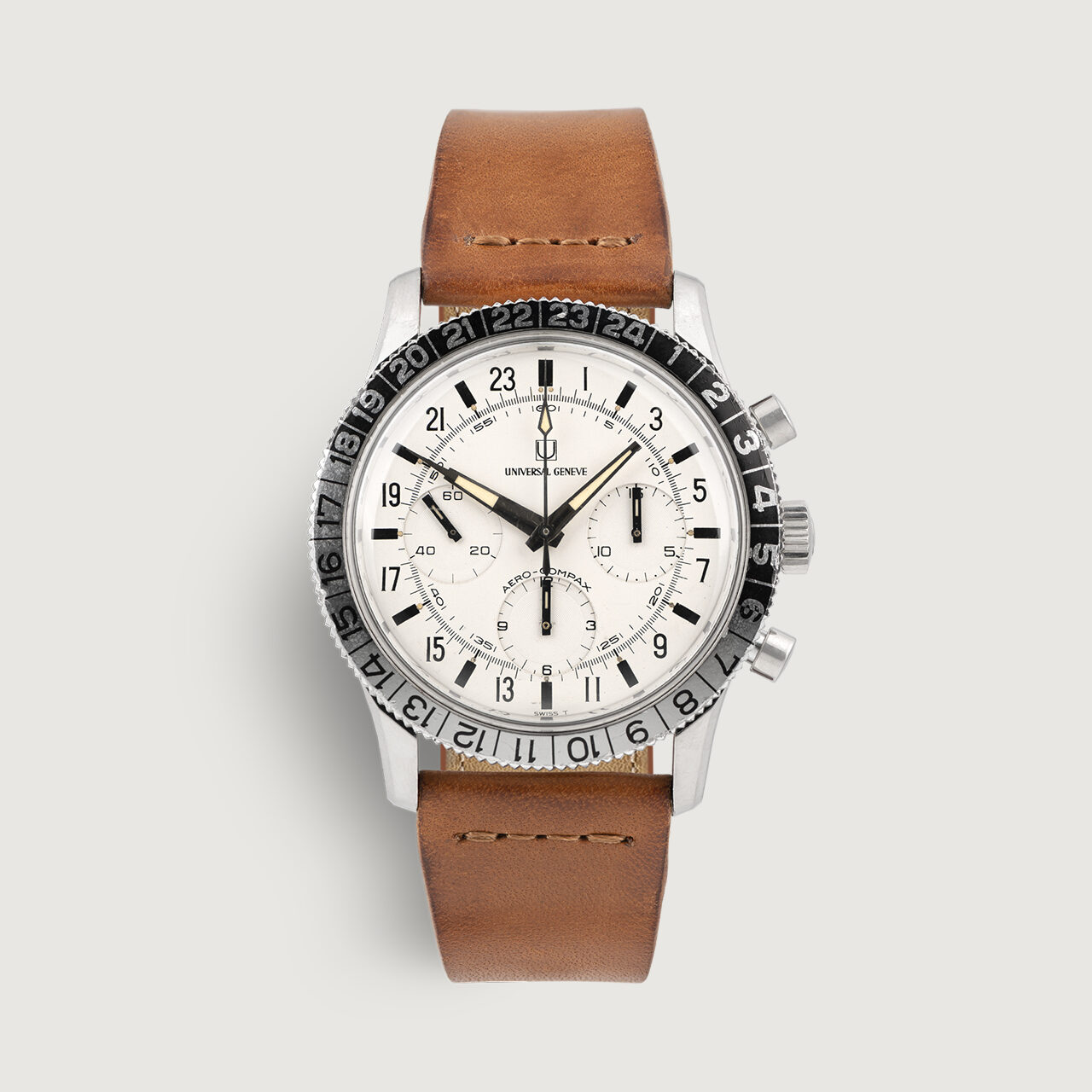1966 Omega Speedmaster “Ed White” Pulsations
SOLD
Out of stock
DETAILS
Found in superb original condition, this Omega Speedmaster ‘Ed White’ reference 105.003-65 is a true Speedmaster collector’s piece. Featuring its original stepped dial with applied logo and original tritium luminous showing a nice even patina across its markers and hands, seldom seen in such condition. Furthermore, this example features a very rare original pulsations bezel in perfect condition. The 40mm case with “straight lugs” in excellent condition, featuring its original “flat foot” crown and a pronounced seahorse emblem to caseback. A few minor scratches can be found on the caseback from previous openings, but these are in line with the example’s age and tool watch status.
The legendary cal. 321 movement powers the ‘Ed White’, and our example is no different, with its movement serial number 22.8xx.xx correct for this reference and year of production. The watch is complimented by a JPM leather strap and features a period-correct Omega pin buckle. Accompanied by a recent Omega Extract of Archives, this example was delivered to Germany in January 1966 and comes with an Omega box and instruction manual, both correct for the period.
Considering this model’s overall rarity, condition and enhanced desirability thanks to its rare pulsations bezel, this is one of the best ‘Ed White’ ref. 105.003 examples that we have ever come across.
| LOCATION | London – UK |
|---|---|
| BRAND | Omega |
| MODEL | Speedmaster "Ed White" |
| YEAR | 1966 |
| REFERENCE | 105.003-65 |
| METAL | Stainless Steel |
| MOVEMENT | Calibre 321, Manual Wind |
| CASE DIAMETER | 40mm |
| BRACELET/STRAP | Embossed Calf Leather w/ Omega Pin Buckle |
| BOX/PAPERWORK | Omega Box, Booklet & Extract of the Archives |
STORY BEHIND
The Speedmaster’s History
Released in 1957, the Omega Speedmaster was inspired by Omega’s earlier chronographs dating as far back as the 1920s and ’30s. While we tend to throw around the word “icon” in the watchmaking industry, the Speedmaster legitimately deserves the title. Like most chronograph’s, the Speedmaster was designed for race car drivers and pilots who needed to time events, calculate average speeds and make other rapid calculations on the go. With this, the tachymeter along its bezel is what inspired its name. While these high-octane activities are significant to many watches and watchmakers, they aren’t why the Omega Speedmaster has become what it is today. Instead of being linked to a race track, event or driver, the Speedmaster is linked to NASA and the Moon, quite the unique claim to fame.
After beating out a selection of other brands during a series of gruelling endurance tests, the Speedmaster was selected as NASA’s official timepiece and was first used in space during the Gemini program in 1965. Worn by astronauts on the outside of their spacesuit on a long nylon strap that would wrap around their arm several times, it wasn’t long before Omega began to make the most of the Speedmaster’s link to NASA and all things space. Taking NASA’s images of astronauts wearing their Speedmasters during spacewalks and placing them in their marketing material, Omega were able to establish a profound connection between the Speedmaster and space. With the public’s fascination with all things extra-terrestrial during the intense Space Race that was unfolding at the time, this was by far the best thing that could have happened for Omega and their Speedmaster.
Thanks to its use in space and on the Moon, the Speedmaster has gained legendary status that has carried through to its modern versions. The Speedmaster even played a vital role in saving the Apollo 13 moon-landing mission from inevitable failure as it enabled the astronauts to time their last-ditch effort to return home perfectly. With the Speedmaster’s unmistakable contribution to the safety and success of that particular mission, Omega won a Silver Snoopy Award from NASA, a feat they still celebrate to this day.
The ‘Ed White’ ref. 105.003-65
An iconic Speedmaster reference, the ref. 105.003 that you see here is famed not for going to the Moon like some of its Speedmaster siblings. Instead, it was worn by Astronaut Ed White during the first American Space Walk in 1965 as part of the Gemini 4 mission. Famously staying out in space longer than he was supposed to, he eventually re-entered his spacecraft, declaring, “I’m coming back in…and it’s the saddest moment of my life.”
Named the ‘Ed White’ due to its link to the legendary astronaut, this early “Pre-Professional” Speedmaster has become a beloved variant of the Speedmaster thanks to its unique heritage and distinctive aesthetics. In fact, the ‘Ed White’ has become such a beloved Speedmaster amongst vintage fans; Omega reissued it at the start of 2020.
Featuring a straight-lug case, the ‘Ed White’ lacks the twisted lug design that later Moonwatches sported. Combined with its lack of crown guards, the ‘Ed White’ features a more svelte profile and thus possesses a more vintage aesthetic than its subsequent Speedmaster progeny. With its classic Omega pie-pan dial featuring an applied Omega logo and “Speedmaster” only script, the ‘Ed White’ Speedmaster signifies the end of the “Pre-Pro” era. After the ‘Ed White’, Speedmasters would carry the “Professional” designation on their dial as they became the assigned timepiece to accompany astronauts to new frontiers.
The Cal. 321
Like many other iconic timepieces, the ‘Ed White’ has much more going for it than its already incredible heritage and design; it is powered by one of the most important movements in Omega’s history. Perhaps just as iconic as the watch that it resides within, the Calibre 321’s architecture is based on the Lemania ébauche 2310 and was used by the Speedmaster until its “Professional” era. Featuring a column-wheel and horizontal clutch chronograph movement, the manually wound cal. 321 is regarded as a far more prestigious and high-end movement than the more economical and non-column wheel actuated cal. 861 that was introduced to the Speedmaster collection after the ‘Ed White’.
Bezels and their uses
One of the most consistent design aspects of the Speedmaster over the years has been its tachymetre scale bezel. After all, it is where the Speedmaster’s name comes from, as a tachymetre is traditionally used to calculate speeds (and distances). While the tachymetre bezel is most associated with the Speedmaster, it was one of four bezel options at the time including telemetre, decimal & pulsations.
Perhaps the rarest and most desirable bezel on an Omega Speedmaster ‘Ed White’ is the pulsations bezel or ‘Gradué Pour 15 Pulsations’. Known as the ‘Doctor’s bezel’, the pulsometer is used exclusively to calculate heart rates and was extensively used throughout the medical profession. To operate a pulsometer, one simply finds a pulse, starts the chronograph, counts the number of heartbeats mentioned on the scale (often 15 or 30), stops the chronograph when that number of beats is reached and reads off the indicated heart rate as displayed by where the chrono seconds hand points to along the bezel.




